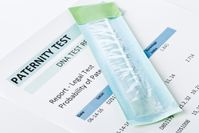What Is DNA Paternity Testing?

DNA paternity testing is the most accurate way to determine the identity of a child’s biological father. It is often requested to provide proof of paternity to a court—such as in cases to determine child custody or child support. The following guide further explores the process involved.
How Does DNA Paternity Testing Work?
DNA paternity testing compares the alleged father’s DNA with the child’s. During the test, a technician will collect epithelial cells from the inside of the individuals’ cheeks with a cotton swab. The process is non-invasive and doesn’t cause any pain or discomfort. When done correctly, the accuracy of the test is almost 100%. In particular circumstances, DNA samples other than cheek swabs may be used—such as blood or fingernail clippings.
Is It Necessary to Test the Mother?
 To ensure the results of the DNA test are as accurate as possible, the mother should also get tested. This will help the lab determine which half of the genes came from her and, consequently, what material is from the father.
To ensure the results of the DNA test are as accurate as possible, the mother should also get tested. This will help the lab determine which half of the genes came from her and, consequently, what material is from the father.
How Soon Can Testing Be Conducted?
DNA paternity testing can be performed as early as the first trimester of pregnancy. However, testing is often discouraged in utero as it can increase the risk of miscarriage.
How Long Does It Take to Get Results?
Generally, it takes between five and ten days to receive results from a paternity test. If you need results sooner than that, speak to the testing center.
If you’re looking for reliable DNA paternity testing, turn to Artesia Drug and Alcohol Screening in Eddy County, NM. The lab is known for its excellent reliability and customer service, which it has been providing since 1998. The facility also provides reliable country of origin and drug and alcohol testing for companies and individuals. If you would like to learn more information about their services, visit their website. Call (575) 746-3404 to set up an appointment.
About the Business
Have a question? Ask the experts!
Send your question

